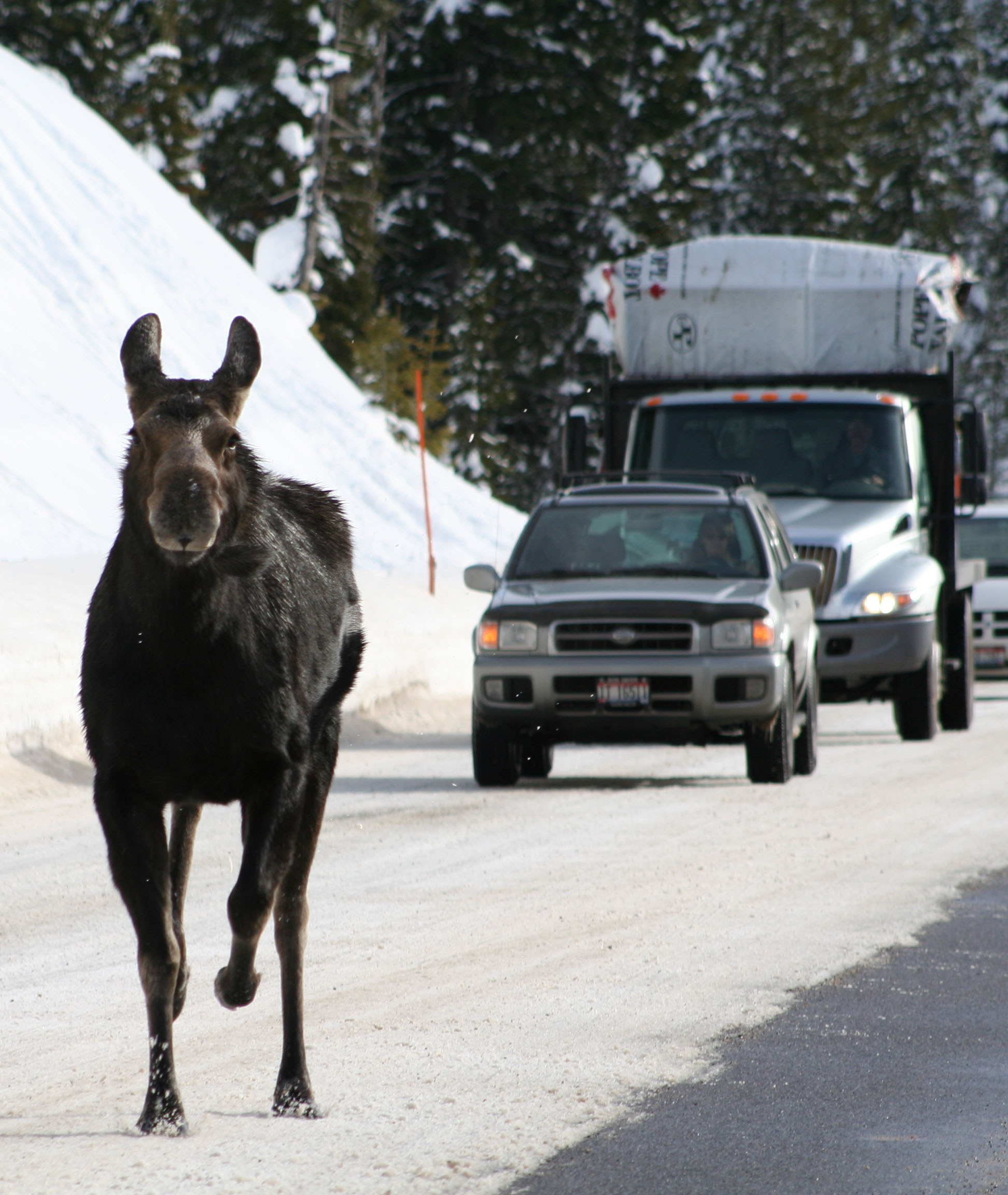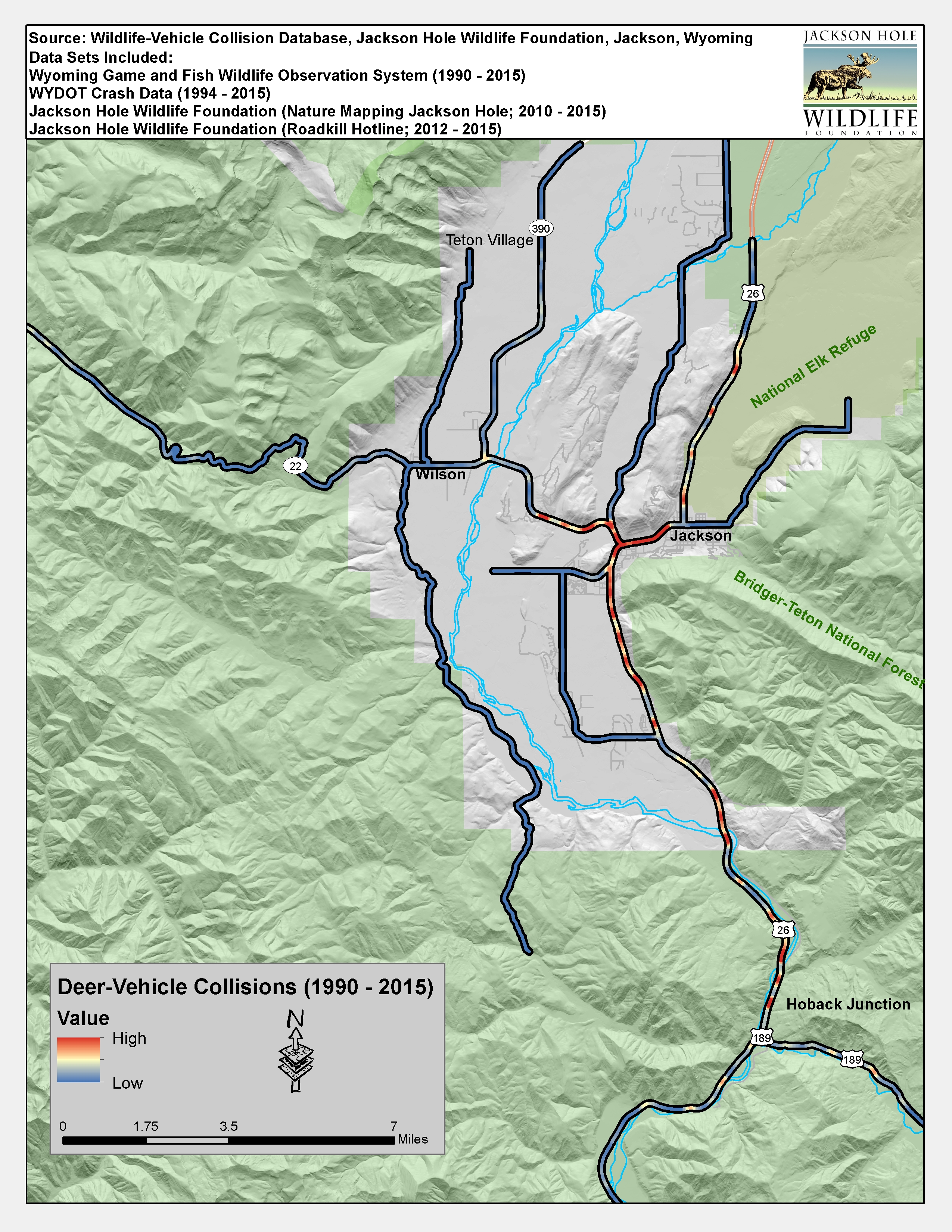What Can I Do To Help Reduce Wildlife-Vehicle Collisions?
1. Review how to ‘drive for wildlife’. See how below. Tell others about these tips!
2. Familiarize yourself with where the wildlife-vehicle collision hotspots are located here and be even more mindful when driving there. Hint: The flashing speed limit and message signs are located in some of these hotspots.
3. Contact your elected officials to let them know that reducing wildlife-vehicle collisions is a priority.
Know the Wildlife-Vehicle Collision Hotspots
We developed and house the most comprehensive wildlife-vehicle collision database for Teton County. WYDOT picks up ungulate carcasses from the roadways and they record the species, location, and date. Police record the same information for crashes that they respond to. Wyoming Game and Fish & Nature Mappers record roadkill observations when they see them.
We’ve taken all of these data from 1990-present, identified and removed duplicates, identified and removed likely errors, and analyzed roadkill hotspots for different species (elk, moose, deer, and all species together). The database includes ungulates, but Nature Mappers have also started recording some of the smaller animals and birds that normally get overlooked (red fox, squirrels, raptors, songbirds, etc.).
Current Major Wildlife-Vehicle Collision Hotspots:
1. Broadway from Scott Lane to Pearl Street
2. HWY 22 from the “Y” intersection to Skyline Drive
3. HWY 89 South from High School Road to the South Park bridge
4. HWY 22 from Emily’s Pond one mile to Green Lane
5. HWY 390 from Rendezvous Park entrance to Nethercott Lane
The map to left shows wildlife-vehicle collisions for deer in Teton County from 1990 – 2015. Click here to see more “hotspot” maps including All Species, Elk, Moose, and Non-Ungulates.
How to Drive for Wildlife – Driving Tips
In Teton County, accidents between vehicles and wildlife kill hundreds of animals each year including moose, elk, deer, bison, wolves, pronghorn, bear and uncounted numbers of small animals and birds. These accidents are also costly to people – with over $2 million a year in expenses for car repairs, personal injuries, disability and death. You can help yourself and wildlife in Teton County to avoid accidents by following a few simple rules:
1. Be alert and drive for the conditions. Most accidents happen at times of low visibility – dawn, dusk, night time or in bad weather.
2. Watch for our electronic warning signs. These signs are put in places where we know animals are or have recently been crossing the road. They’re not just generic warnings – when you see these signs, watch carefully for wildlife.
3. When you see wildlife – Slow Down. If you see one animal cross the road, it is very likely more are close behind. Animals near the road are not waiting for us to pass by – expect them to do something unexpected, like dash in front of your car.
4. In winter, wildlife often use roads to move about – it’s easier than walking through deep snow. But, sometimes they get onto a road and can’t find a quick place to get off. Give them a brake. Be patient and give them time to find a place to get off the road.
5. To protect yourself and your passengers, experts advise that you should not swerve off the road to avoid hitting an animal.
Remember, the opportunity to see wildlife is one of the special gifts of living in Jackson Hole. Let’s all ‘Drive for Wildlife’ to make sure we get to keep seeing them now and into the future.
Photo Credits:
Henry Holdsworth
Mark Gocke
Steve Morriss
Sava Malachowski
Leine Stikkel
Tim Griffith
Jon Mobeck
Jackson Hole Wildlife Foundation
Office Location:
25 S. Willow St., Suite 10
Jackson, WY 83001
Mailing Address:
PO Box 8042
Jackson, WY 83002
All rights reserved.
Privacy Policy




